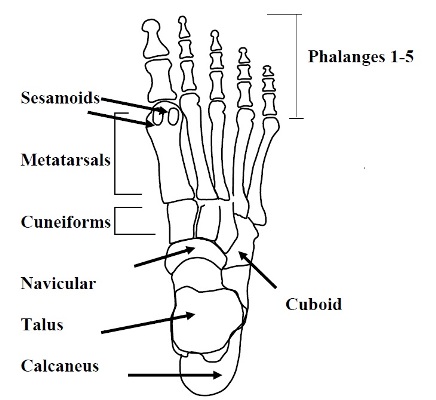
The foot is an extraordinarily complex structure with twenty-eight bones and thirty-five joints. There are thousands of different types of injuries that can occur, including rotational, direct impact/crush, and penetrating trauma.
Most follow typical patterns and some can heal without surgery. For other fractures and joint dislocations, surgery is recommended to correct the deformity, improve function, decrease risks of arthritis or speed up the return to work and sports.
Do you suspect that you have suffered a broken bone in your foot?
If so, let Dr. Silverman help. Dr. Silverman.
What Happens Before Foot Fracture Surgery?
The surgery center will give you individualized advice on how to prepare in the days leading up to surgery. On the day of surgery, the anesthesiologist will administer regional anesthesia known as a popliteal nerve block. You will be given medication to induce “twilight sleep,” placed on your stomach, and a small needle will be used to inject Novocain-like medication around the nerve in the back of your leg. It gives complete pain relief that lasts for 12 to 36 hours after surgery. Patients report extraordinary satisfaction with this type of anesthesia.
What Happens During Foot Fracture Surgery?
A tourniquet will be placed around your calf and incisions are strategically placed. The fractured bones are realigned with plates, screws, or wires. X-rays are taken during the surgery to confirm the correction. The wounds are closed with staples and sutures.
What Happens After Foot Fracture Surgery?
Patients with more severe injuries require an inpatient stay. During this recovery time your family member may take your prescription to the nearest pharmacy. You will be given crutches. Take your narcotic pain control medications during this early post-operative period. Remember, post-operative pain is much easier to control with prevention. Call to schedule your post-operative visit when you feel able.
Foot Fracture Surgery General Recovery Timeline
This timeline is a general guideline. Your post-operative course may vary.
| Elevation | 23 hours / day for 3 days, then as needed for pain control; swelling may last over 4 months. |
| Motion | Move your ankle and toes when the block resolves. This will decrease pain and swelling, and improve healing. |
| Walking | Weight-bearing status depends on type of injury. |
| Bathing | Keep cast dry. Use a DryPro. There are no restrictions after the cast is removed. |
| Pain Control | Expect to use strong narcotics for the first 3-5 days. Wean off as soon as you are comfortable using Tylenol or Ultram (Rx only). |
| Work | Return depends on specific demands. It is safe to return to sedentary work at 10 days post-op. Return to heavy labor will take at least 3 months. |
| Driving | Patients with left foot surgery may drive an automatic transmission. Patients with right foot surgery must wait until healing is adequate and they feel safe. |
Routine Clinic Visits
| 2 weeks | X-ray, cast, suture, or staple removal. |
| 6 weeks | X-ray, This is the earliest time of bone healing. The time to return for your next visit varies significantly. |
| 3 – 4 months | Return for recheck. Strength improves over the next year. Minimal feelings of discomfort may linger, your overall comfort level improves over a year. |
| ********** | if at any time during your post-operative period you notice any drainage or foul odor from your incision, a temperature of more than 100.4 degrees and/or increased swelling or tenderness, you should contact our office. |
For more helpful tips, check out these rehab exercise videos that will help you recover, or reach out to Dr. Silverman for more information!